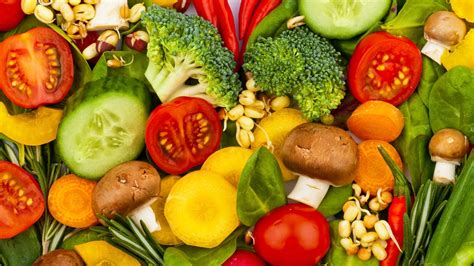Ayurveda and the Raw Food Diet

The word, ayurveda, is derived from the ancient Indian language, Sanskrit, and literally means “Knowledge of Life”. The Ayurvedic approach to life involves:
- listening to and addressing the unique needs of your body,
- recognising and balancing your mental and emotional states, and
- deepening your connection with your spirit.
The raw food diet is based on the principle that eating a diet high in raw food will normalise and alkalise your body. This, in turn, connects the mind with the body. Ayurveda and the raw food diet are therefore very similar. This article aims to provide guidance as to how you can connect the two in a way that is optimal to your health.
Three Principle Energies of the Body
Unlike other medical systems, Ayurveda not only focuses on the treatment of disease but also on maintaining the health of an individual. It believes that nature lies within us as our body is composed of the 5 elements of the universe (ether (space), air, fire, water and earth). In Ayurveda it is believed that there are three basic types of energy (or doshas) which are present in a person’s body and which express these five elements
The three doshas are Vata, Pitta and Kapha, where –
- Vata is composed of the elements of fire and ether
- Pitta is composed of the elements of fire and water
- Kapha is composed of the elements of water and air
All three doshas are intrinsically different energies responsible for a person’s physiological, mental, and emotional character traits – as well as their unique strengths and weaknesses.1,2
A person’s unique ratio of vata, kapha, and pitta is said to define their Ayurvedic constitution, providing us with a blueprint to achieve optimal health.
The quantity and quality of these three energies fluctuate according to the seasons, time of day, diet, and several other factors. Several factors, such as diet, emotional state, seasons, weather, etc. can disrupt the balance of the doshas which can in turn cause an imbalance. Once these factors are understood, appropriate actions can be taken to minimise their effects and re-establish balance. Balance is health whereas imbalance is disease.
Diet According to Your Ayeurvedic Constitution
The three doshas are usually balanced in the body but people are usually predominant in one or two of the doshas. This determines their ayurvedic composition. Each of the doshas has a distinct and recognizable group of qualities:
- Vata types are generally thin and find it hard to gain weight. Vatas need to get sufficient rest and not overdo things as they easily tire.
- Pitta types are generally medium sized and well proportioned. They tend to be intelligent, with a sharp wit.
- Kapha types tend to have sturdy, heavy frames. They are prone to gain weight easily. They often tend to have a positive outlook on life.
So, what does this mean, and how does it apply to you?
In Ayurveda, it is believed that each person is governed by one dominant dosha and you should eat according to that dosha. As we are concerned with Ayurveda and raw food, we will only mention the foods that coincide with both these diets.
Vata
Foods that balance Vata:
Sweet fruits, apricots, avocado, bananas, berries, grapes, melons, asparagus, beets, cucumber, garlic, radishes, zucchini.
Foods that aggravate vata:
Dried fruits, apples, cranberries, pears, watermelons, broccoli, cabbage, cauliflower, raw onions.
Pitta
Foods that balance Pitta:
Sweet fruits, avocado, coconut, figs, mango, prunes, sweet and bitter vegetables, cabbage, cucumber, okra, potatoes.
Foods that aggravate Pitta:
Sour fruits, berries, bananas, plums, oranges, lemon, pungent vegetables, garlic, onions.
Kapha
Foods that balance Kapha:
Apples, apricots, berries, cherries, cranberries, mangos, peaches, pungent and bitter vegetables, broccoli, celery, garlic, onion.
Foods that aggravate Kapha:
Sweet and sour fruits, bananas, coconut, melons, papaya, sweet and juicy vegetables, potatoes, tomatoes.
Ayurvedic dietary suggestions can be easily translated into a raw food diet. These include:
- Eat mainly seasonal fruit, vegetables, nuts, seeds and grains
- Eat according to your constitution, or dosha
- Fast for one day every two weeks
- Establish a regular eating routine
- Eliminate or limit caffeinated, carbonated and alcoholic beverages from your life
- Drink herbal tea, fruit and vegetable juices
Once you determine your Ayurvedic constitution (body type), you will be able to keep your energies balanced by eating according to your constitution.
